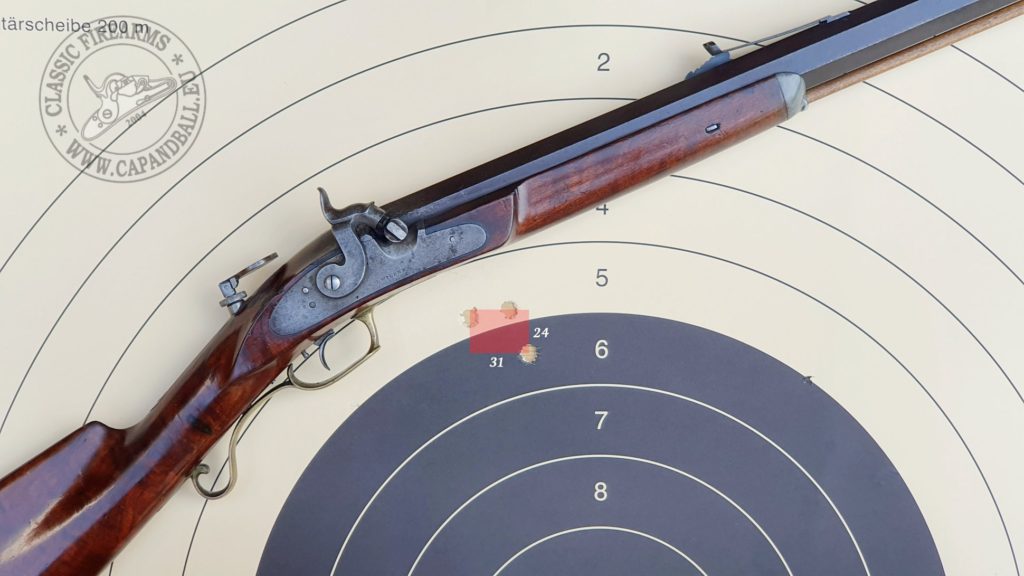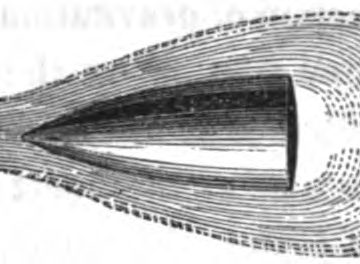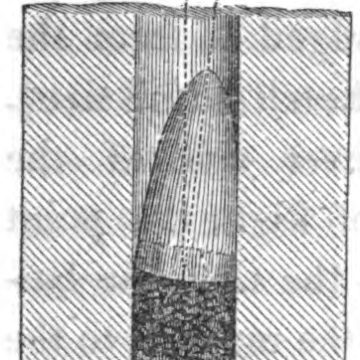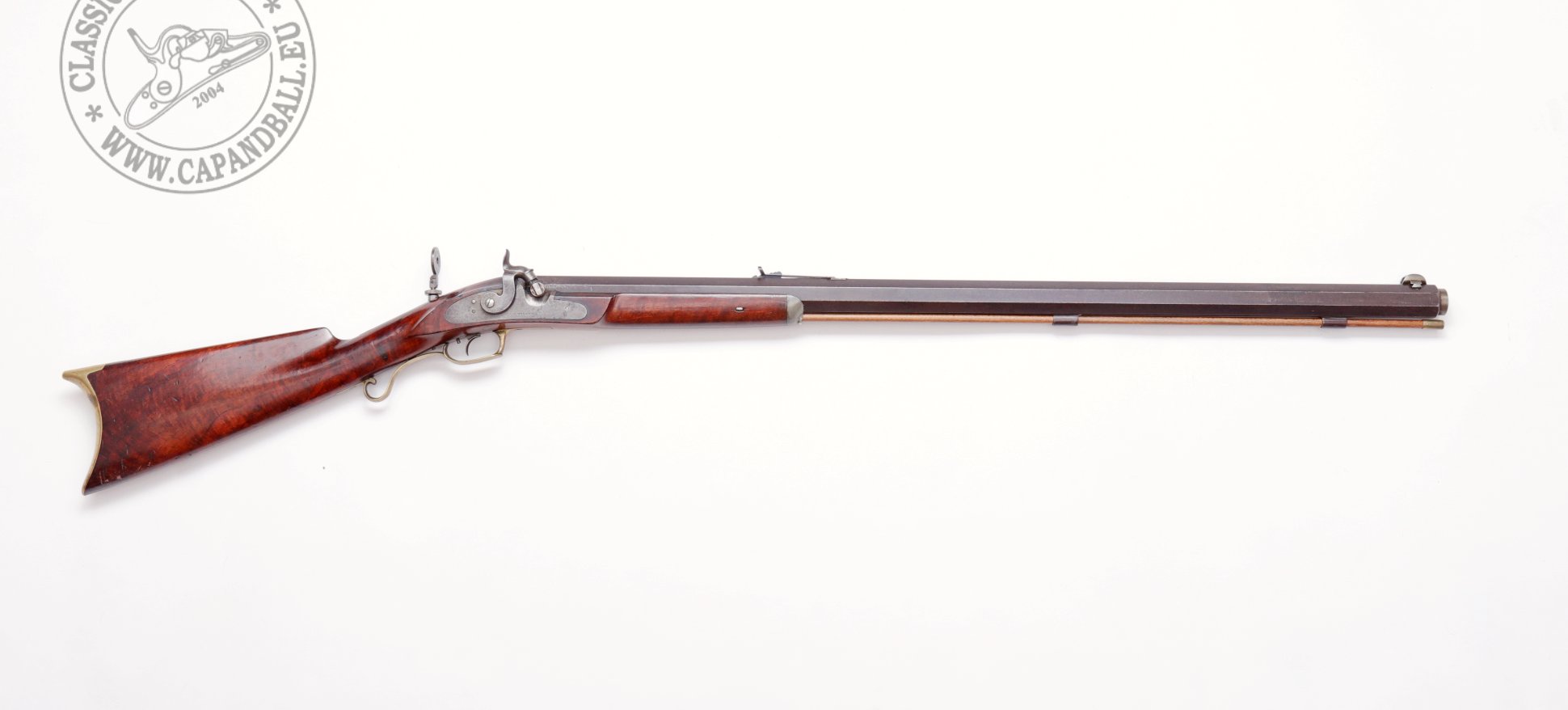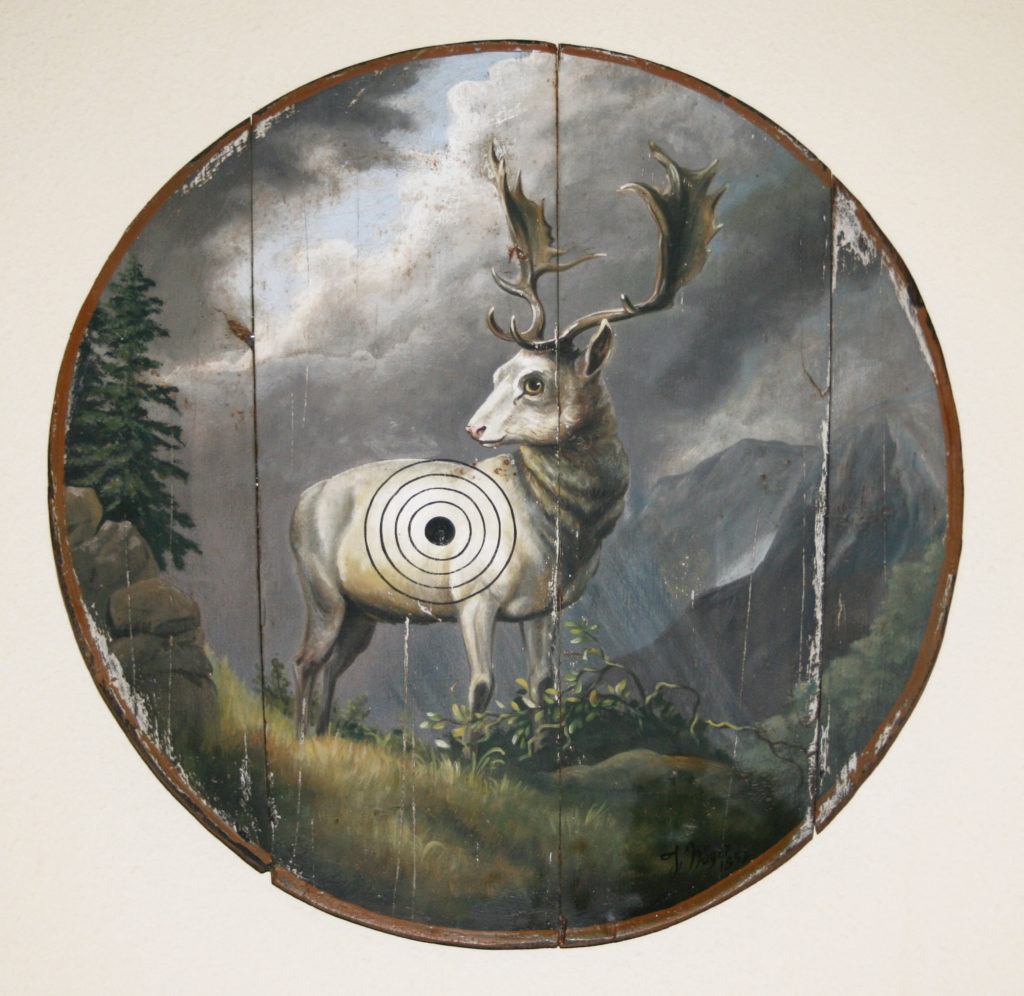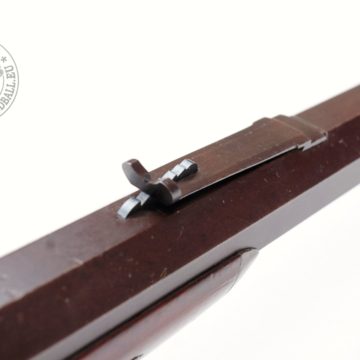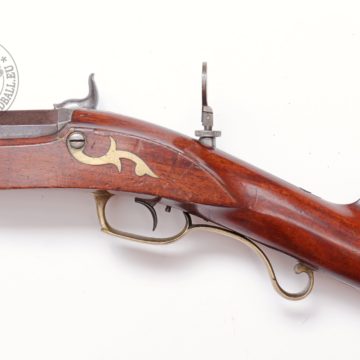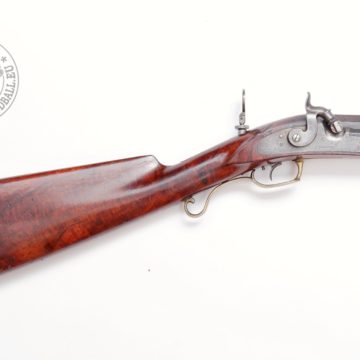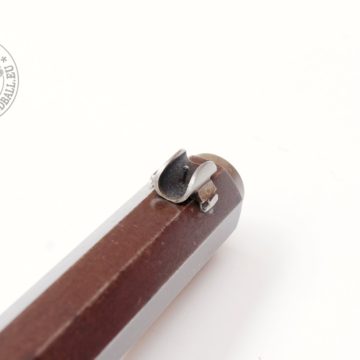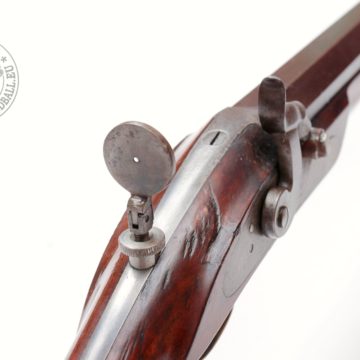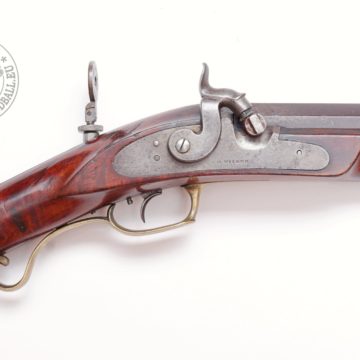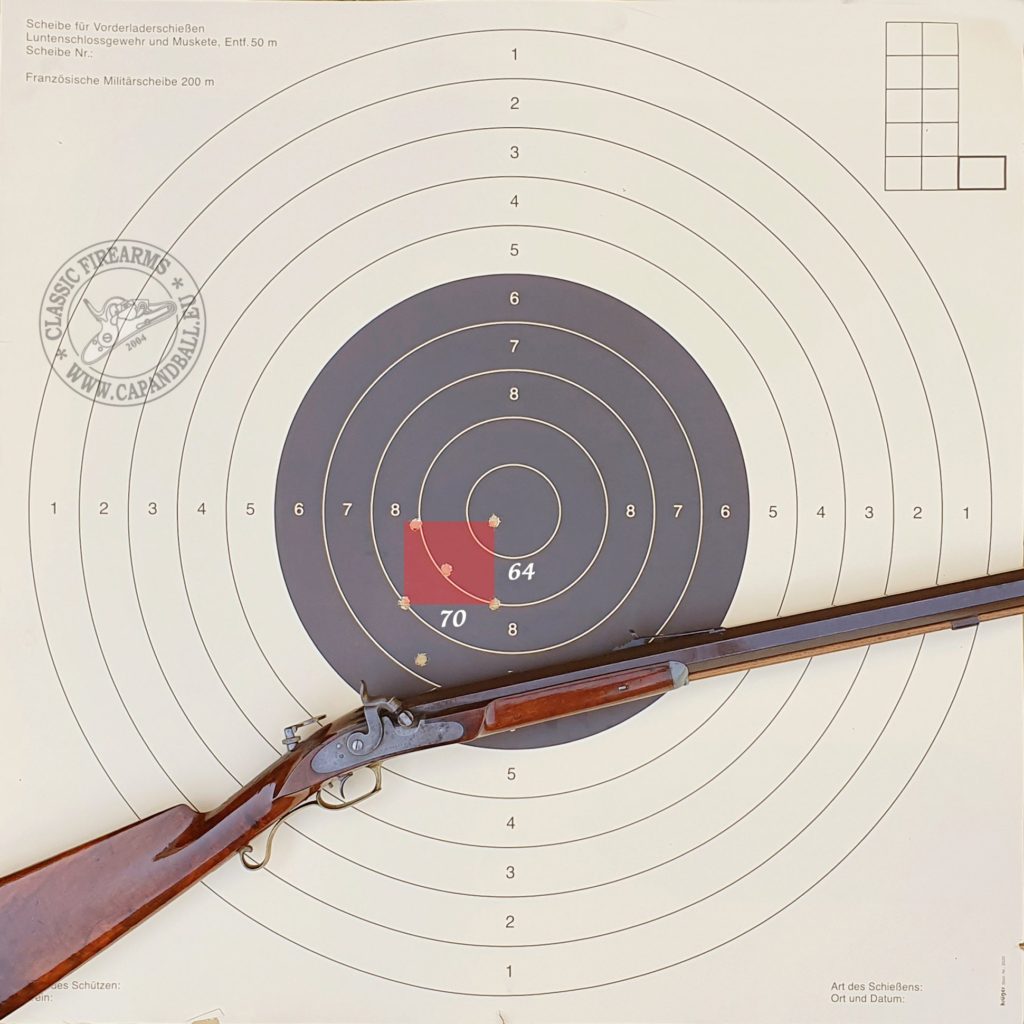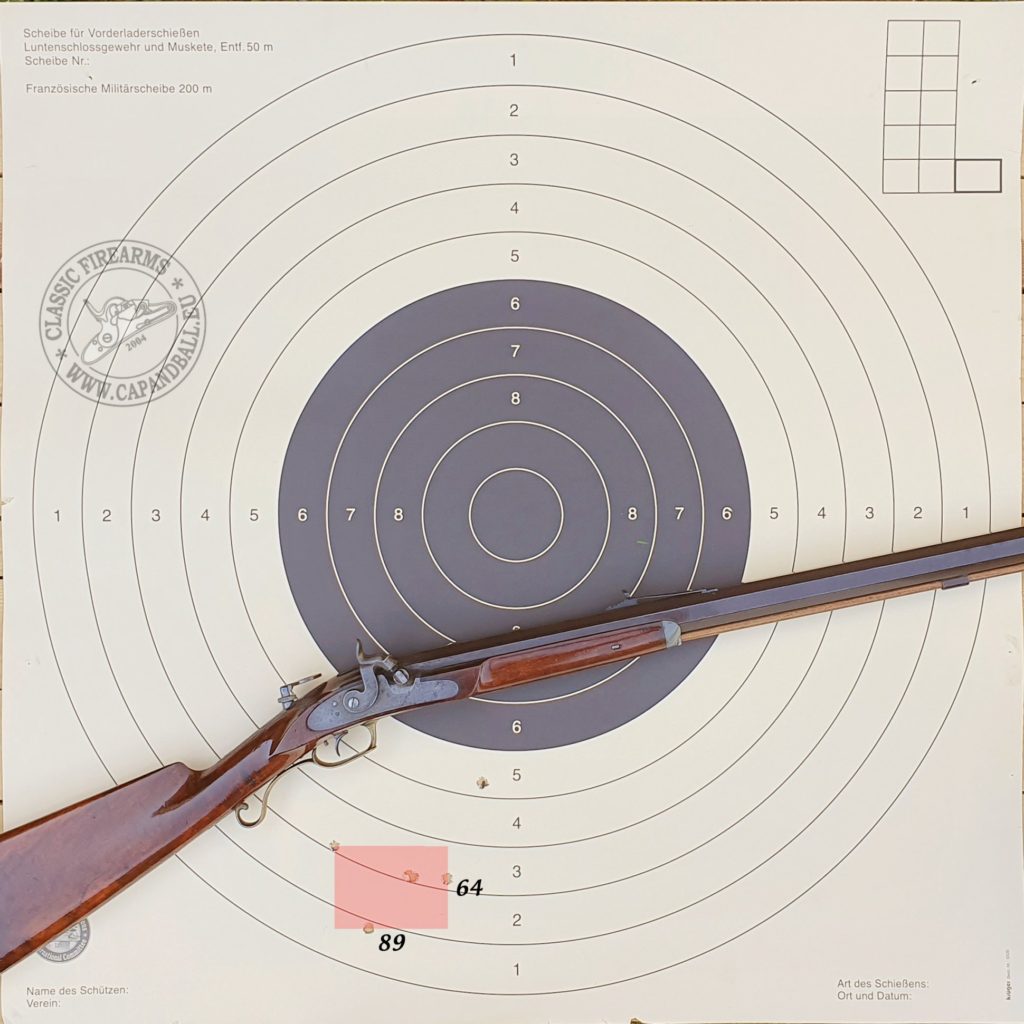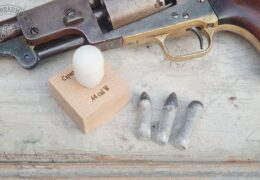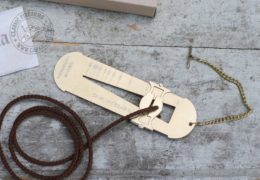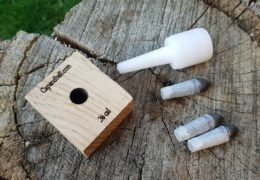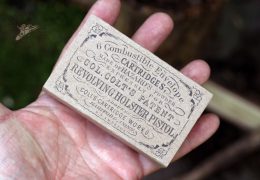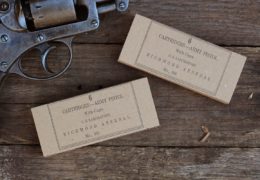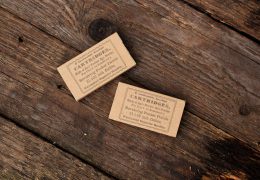Percussion picket rifle by R. M. Wilder and the early target shooting in the United States

R. M. Wilder was a rifle maker in Cold Water, Michigan in the middle of the 19th century. (Carey 1953: 133) In fact, not too many information is available about this maker, all we know that he made quality rifles. My books offer only basic information about wilder, and a quick search on the internet revealed only three additional rifles from him. One mule ear over under rifle, one swivel breech rifle and one rifle made by Remington with a Wilder barrel. The land to land diameter of the bore is .425”, meaning there are no commercially available moulds for this gun. The twist rate of the rifling is 1 complete turn in 23” inches, ideal for conical, poor for patch round ball. Recently I borrowed a bit oversized Buholzer mould from a friend of mine casting a .423-.424”, 340 grain long bullet with a Minié style skirt, so I decided to give the rifle a new try. Just a little bit of load development was necessary to settle with 50 grains of 2Fg Swiss powder, resulting a really tight 100m four shot group fired from a rest, that could be covered by a 24×31 mm rectangle. That group was really close to one MOA, and considering the open sights it is still considered remarkable accuracy.
So, this is a picket rifle, these rifles were made and used in the 1850s-60s, and were one of the first target rifles shooting conical balls. They were designed for offhand shooting and had heavy octagonal barrels, calibres smaller than military calibres, fats rifling twit to stabilize the elongated projectiles well.
Most of them were equipped with target peep sights of primitive optics, and they equipped with a set trigger system. Most of these rifles were equipped with a false muzzle for aiding the proper alignment of the bullet with the bore. These devices were made from a section of the bore, it was invented and patented by Alvan Clark from Massachusetts in 1840, he called it a movable loading muzzle for rifles. (U.S. Patent No. 1,565, dated April 24, 1840.) The false muzzle was often accompanied by a tool called guide starter, to start the bullet in the proper position without damaging its cone.
These rifles fired a picket ball, that’s where the name comes from. These primitive conical bullets differ a lot from the later conical bullets as they do not have large bearing surfaces contacting the rifling, and they were quite short, seldom longer than two calibres. They had to be properly aligned with the axis of the bore to offer good results. According to contemporary sources the flat point version was the most accurate of all: “The shape of the bullet is a subject which has occupied the time and attention of scientific men to a degree which must excite the astonishment of one who has no knowledge of the difficulties attending it. With our target riflemen, the flat ended picket, with its base slightly rounded, is the form which is universally accepted as the best for accuracy.” (Cleveland 1864: 60). Round balls were exclusively made from pure lead. On the other hand, hardening the alloy of the conical bullets were quite common in the middle of the 19th century: “Some weapons require the lead to be hardened, whilst others seem to perform the best with the very softest. The cause of this I am not thoroughly master of; but, as a general rule, rifles cut with deep creases, and much freed, require the soft lead, and those cut shallow and moderately freed, the hard. […] in some cases it is necessary to use hard lead, which may be made either by an admixture of tin, antimony, bismuth, or old type metal.” (Chapman 1848: 60-61) Freshly casts bullets were not ready for firing, further quality control and lubeng was necessary: “After the leads are cast and examined over, the next process is to cut off the ” sprews,” with a pair of nippers, and this must be carefully done, if you wish the bullets to balance evenly. After putting them into a small bag with a few drops of oil, and working them about so as to coat them evenly over, they may then be swedged, balanced and put into the bullet-rack.” (Chapman 1848: 63)
Some of these bullets were patched with traditional greased linen patches of with cross patches, like the one described in H. W. S. Cleveland’s book titled Hints for the riflemen printed in 1864: “The patch must be of the finest linen, and used with the glazed side next the barrel, and in order to insure its folding evenly and without a wrinkle about the bullet, it should be cut with a steel punch in this [cross] shape”. (Cleveland 1864: 69) A lot depended on the quality and size of the patch: “For fine target practice you do well to use the best brown Irish linen, the price of which is about 50 cents per yard. […] The diameter of the patch, consequently the punch, must be twice the diameter of the butt of the bullet.” (Chapman 1848: 68)
The loading procedure of this combo needed extra care: „A circle is marked around the muzzle corresponding in size to the circumference of the patch, which (having been previously wet with saliva) is laid on so as to coincide with it, thus insuring the exact centring of bullet and patch on the muzzle, and the ” starter ” being then applied to the bullet, it is driven down some two inches to the point at which the ” freeing ” of the barrel begins. The starter and false muzzle are then removed, and the rammer being inserted, the bullet is slid gently down till it touches the powder, when the rammer is withdrawn, care being always taken to avoid pressure upon the powder.” (Cleveland 1864: 69)
Each rifle was equipped with bullet moulds, but as CNC machining did not exist by those times, bullet moulds were not perfect. The bullet had to be swaged to the proper size with a swaging die matching the exact bore diameter. “A bullet, when oiled as above described, is taken and put point downwards into the bore of the swedge, the stamper is then placed upon it and struck smartly two or three times with a light hammer weighing about 6 ounces. The exact strength of each stroke must be determined by practice, for the employment of too much force raises up a burr edge, and too little does not fill up the swedge at the butt of the bullet. After being swedged, the bullets must be carefully balanced in a pair of small scales, kept for that purpose, and then put into the rack of the ammunition box.” (Chapman 1848: 66)
The R.M. Wilder rifle is quite heavy, and nose heavy as well of course. The total weight is 5.5 kg, barrel length is 82 mm. The stock is maple, the rifle is equipped with a single set trigger – not really common on American target rifles. The folding “lollipop” peep sight is a bit off from the bore axis, that will have to be repaired, so I used the buckhorn rear sight and the bead front sight combo this time. The barrel is not equipped with a false muzzle, but the guide starter was surely the accessory of the rifle. This is why the octagonal barrel is turned round at the muzzle. The let off of the stock is large, proving that the rifle was designed for offhand shooting. Many of these American schützen rifles were equipped with palm rests. In most cases these were integral parts of the rifle screwed into the fore stock. My rifle does not have this accessory, although it would be very useful for a stable hold. Probably I will later make a George Phillipp Schalck style removable palm rest repro.
Target shooting in the United States
‘I never in my life saw better rifles (or men who shot better) than those made in America’ (quoted in Kauffman 2005: 24) stated George Hanger of the British Army serving in North America in the end of the 18th century. This statement was not only true for the riflemen but for their arms as well. Interestingly shooting the rifle for living was a well understood necessity in the frontiers, but organized target shooting only started in the middle of the 19th century mainly influenced by German immigrants. The first Schützen Verein or shooting club was founded in 1846 in Philadelphia by gunsmiths, and it was soon followed by many all across the country. The federation of American Schützen organizations called the North American Sharp Shooting Union was formed in 1864 in Highland, Illinois. The task of this organization was primarily to harmonize the target shooting events on a national level. (Hamilton&Rowe 2004:7-8)
The championship or as it was often called the Schützenfest was a great public event. Targets were placed usually to 200 yards for offhand shooting. The calibre of the rifles was usually limited to under military calibres (.559 or below), while the optical sights were usually banned from such competitions. Targets could be bull’s eye or point targets, but probably the most valuable achievement was to get the honour target or Ehrenscheibe, a pictorial target, technically a painting for selecting the shooter king, or Schützenkönig according to German traditions.
Shooting the R. M. Wilder rifle
My shooting session involved firing the rifle to longer distances than the usual free rifle standing distances at MLAIC matches. I looked for a comparison with my Austrian flintlock military rifle, so I decided to try the rifle at 100 paces or 75m and 150 paces or 112m on the same target. I shot the rifle from the Swiss position, a standing position developed by Swiss shooters many centuries ago, well described by Captain Heaton’s book: Notes on rifle shooting, published in 1864: “Next we have the Swiss position in which no particular manner of placing the feet is required. The whole body is kept perfectly rigid, the chest expanded as much as possible, against which the left elbow is allowed to rest, the rifle being held with the left hand, as near the trigger guard as possible. The Swiss rifles have a kind of handle for this purpose. The upper part of the body is thrown back. Before firing, you may notice the Swiss marksman taking a long, deep inspiration, which he holds until the bullet has left the rifle, when he gives a loud grunt of satisfaction if the shot pleased him.” (Heaton 1864:5)
Powder was measure with a charger: „This is generally made of a brass tube of the same diameter as the bore of the barrel, 2 ½ inches long, furnished with a wooden stopple, upon which is marked the charge proper for the rifle it is intended to accompany. As a measure of weight it is sufficiently accurate for general performance, but when the utmost nicety is requisite, the charge of powder must be weighed in a pair of delicate balances and put into tin or brass tubes closed up with nicely fitted stopples.” (Chapman 1848: 58) Chapman recommends the American Powder Company’s powder as the best for American rifles: “Its characteristics have been mildness, moderate strength, evenness in size of grain, and the residuum, considered by chemists to be a sulphuret of potash, very soluble in water, thus requiring the introduction of a very small quantity of moisture into the breech part of the bore of the rifle. English rag, Dupont’s, and other strong, quick firing powders, in which the component parts are very pure, do not work well in these particular rifles.” (Chapman 1848: 58)
Balázs Németh, 2020.
Carey, Arthur Merwin (1953): American firearms makers. New York: Crowell.
Cleveland, Horace William Shaun (1864): Hints to riflemen. New York: D. APPLETON AND COMPANY.
Chapman, John Ratcliffe (1848): Instruction to young marksmen. New York: D. APPLETON AND COMPANY.
Heaton (1864): Notes on rifle shooting. London: Longman, Green.
Hamilton, John; Rowe, Tom (2004): The American Percussion Schutzen Rifle. Andrew Mowbray Publishing.

